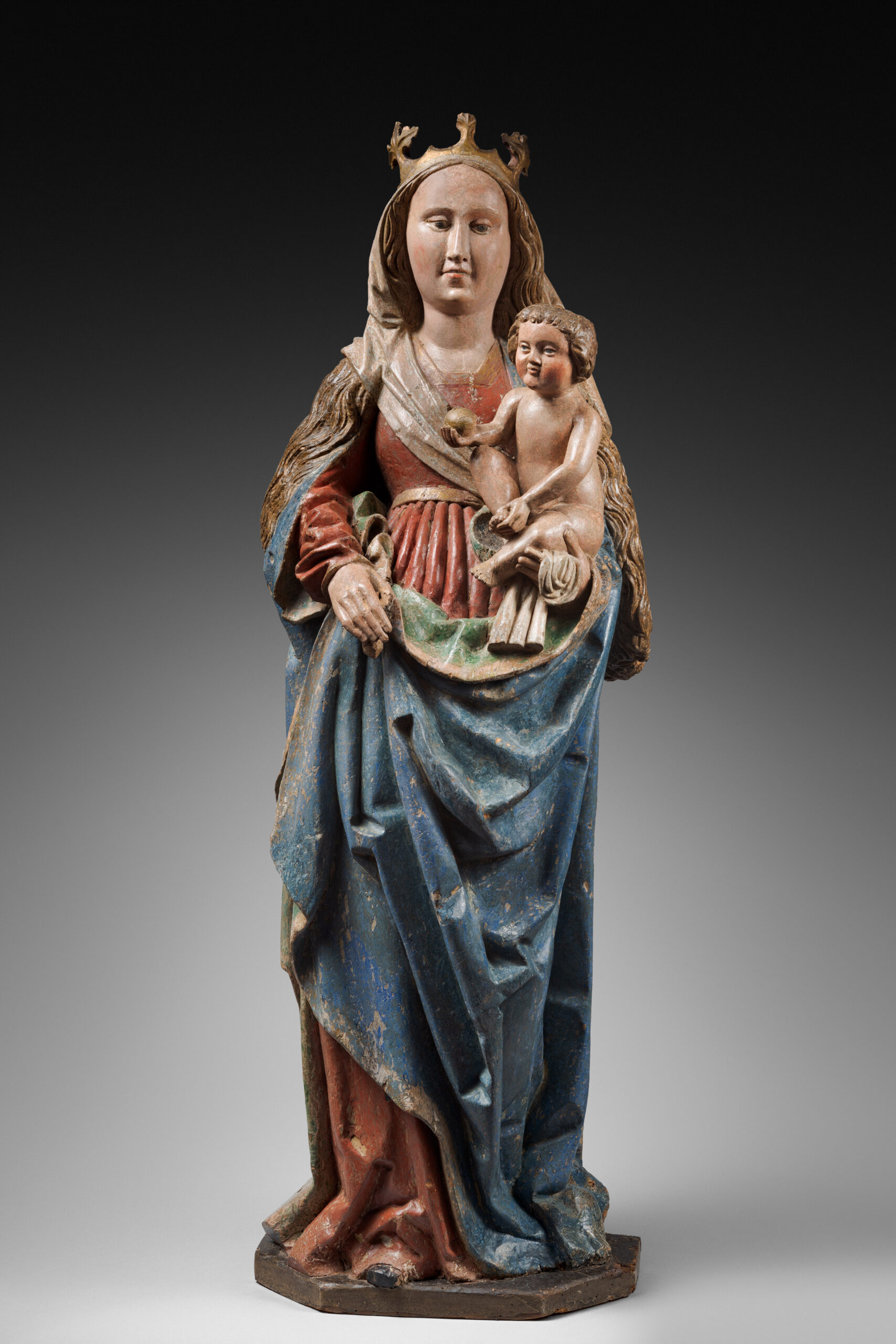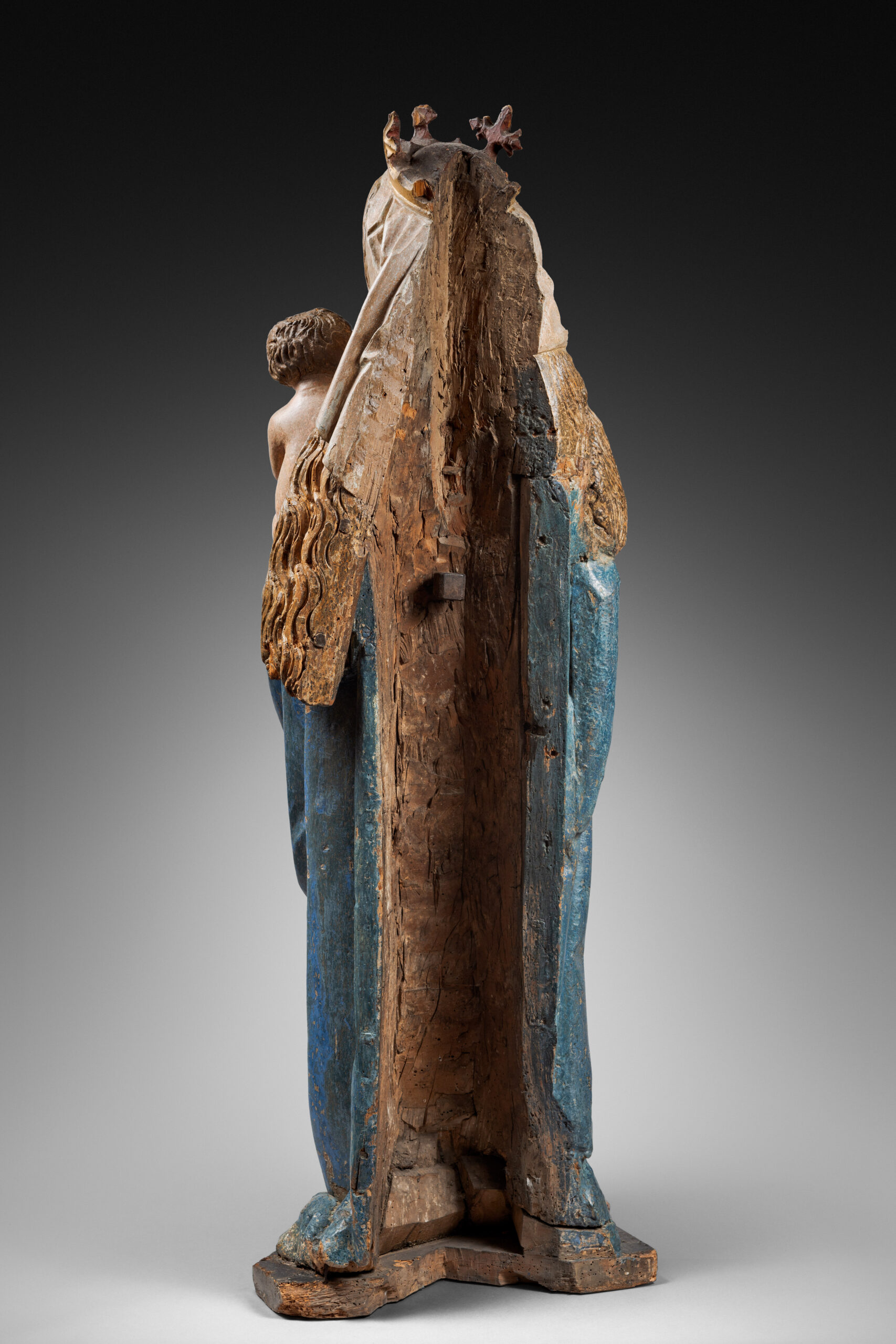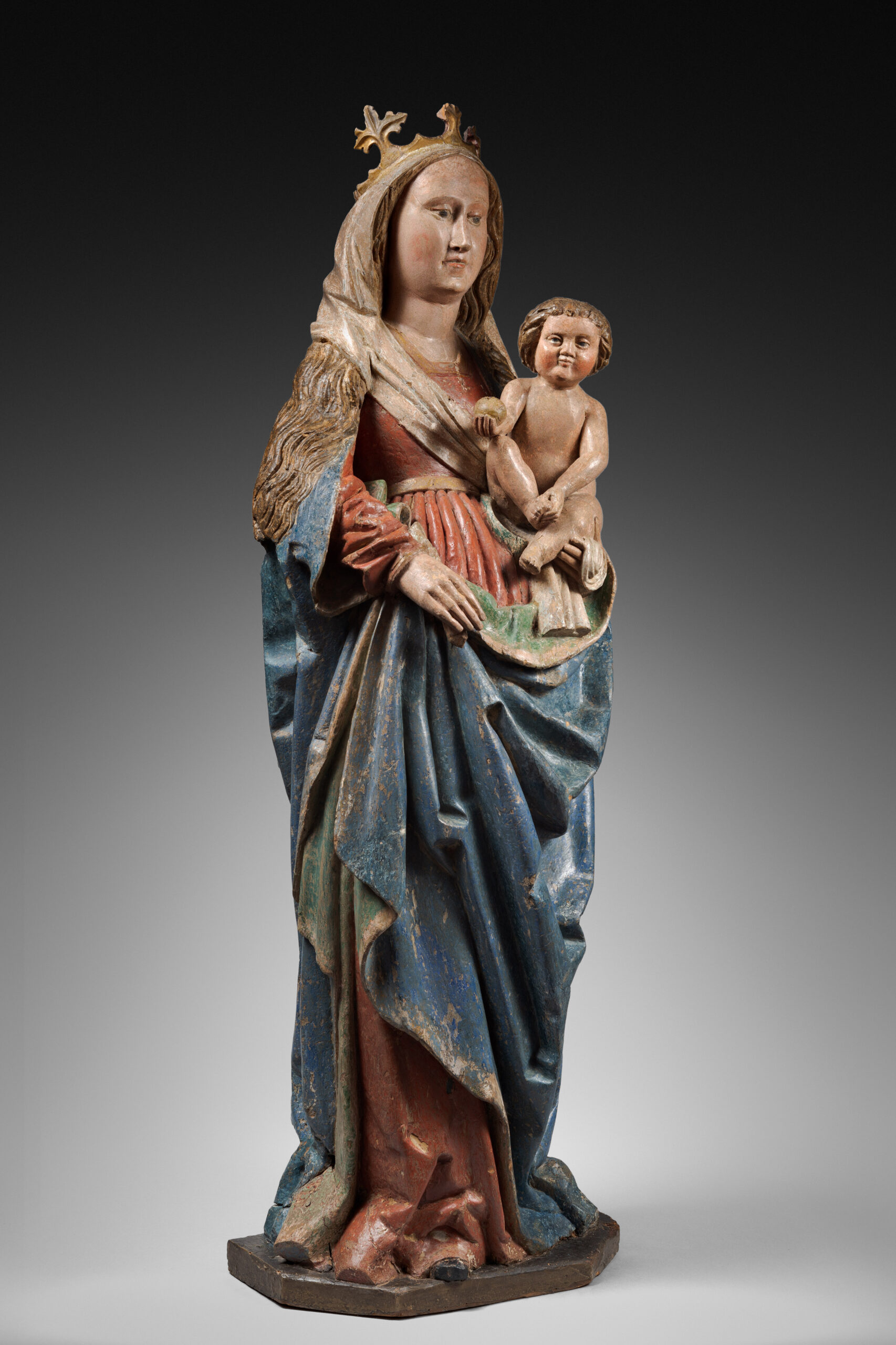Description
As soon as 1430, sculpture starts a major and deep stylistic evolution than will unfold over a century, until around 1530. We call it the International Gothic. This production is particularly interested in a quest for realism.
This important Virgin & Child wears a long red dress with a round gilded neckline. A delicate golden belt cinches her waist.
With her right hand she holds her heavy blue coat lined with green. Deep V-shaped pleats emphasise the draping while the bottom of her dress flares and spreads on the floor like it was common at the time.
Her beautiful oval face with almond-shaped eyes, straight long nose, determined lips carved with dexterity and her round chin, all bring a great softness to the Virgin. Her gazing look gives her a pensive attitude. Her high and large forehead is crowned with a coronet that secures a veil on her lush blond hair spreading on her shoulders and her back. Noteworthy is the detail of how she uses her veil to carry her child.
She is depicted without contraposto, in a realistic posture with her bust slightly tilted towards the back because of the weight of the child she carries.
Her child is naked and presents carefully designed curls and a doll-like face. His cheeks are highlighted in red, his look is voluntary and in his right hand he holds an orb. With his left hand he plays with his foot. An anecdotic gesture that animates the sculpture with great vitality.
This remarkable work is a very fine example of the production of Swabian workshops in the last decades of the 15th century. It features all the characteristic elements such as a strong figure with a protruding stomach, the belt worn high, the full face with a distinctive chin, the abundant drapery as well as the physical presence of the characters that is brought forward thanks to the polychromy rendering the anatomical details.
Literature
Sophie Guillot de Suduiraut, Dévotion et séduction, Sculptures souabes des musée de France, vers 1460-1530, Paris, musée du Louvre-Éditions Somogy, 2015



